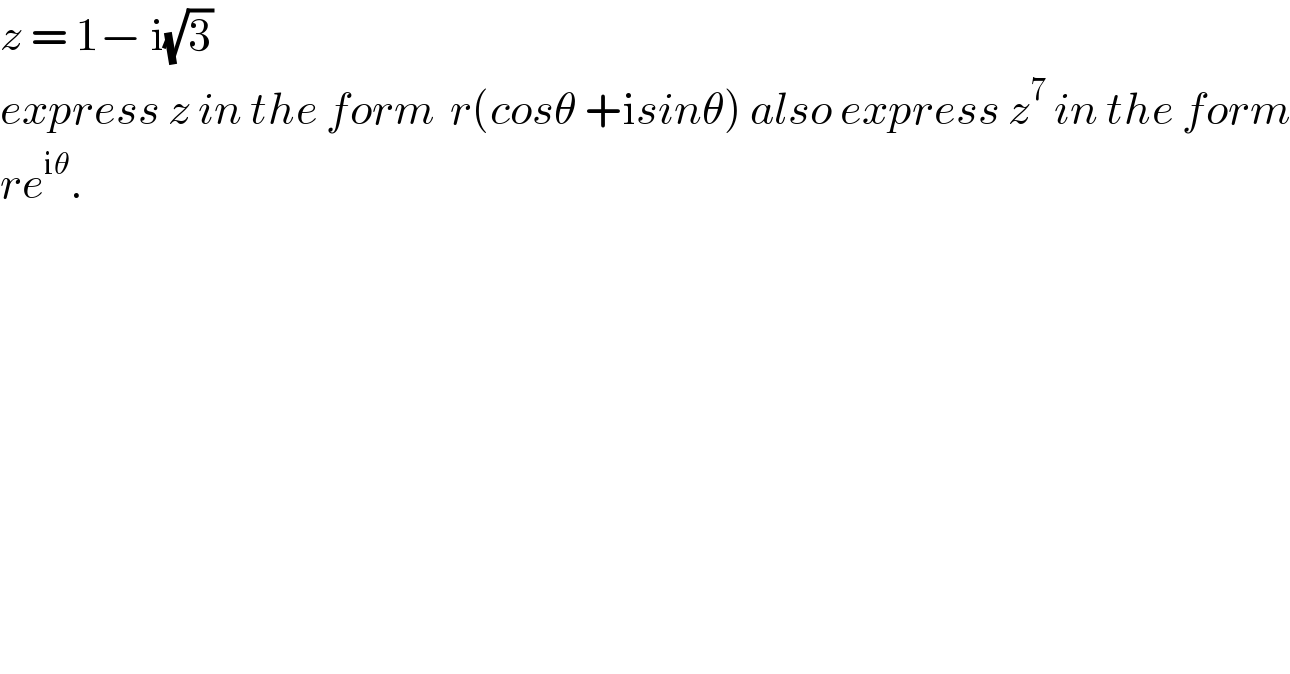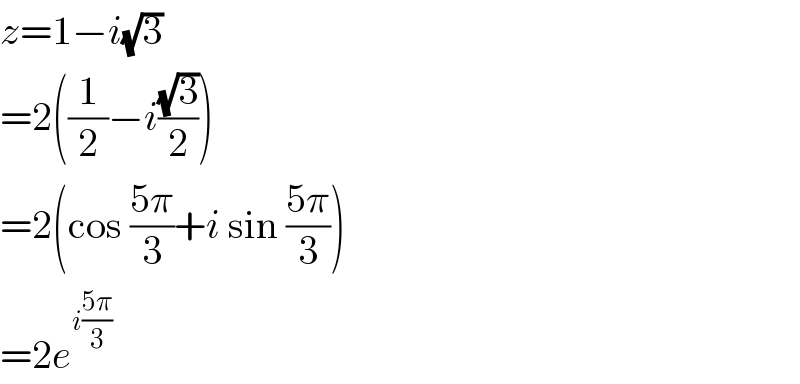
Question Number 65168 by Rio Michael last updated on 25/Jul/19

$${z}\:=\:\mathrm{1}−\:\mathrm{i}\sqrt{\mathrm{3}} \\ $$$${express}\:{z}\:{in}\:{the}\:{form}\:\:{r}\left({cos}\theta\:+\mathrm{i}{sin}\theta\right)\:{also}\:{express}\:{z}^{\mathrm{7}} \:{in}\:{the}\:{form} \\ $$$${re}^{\mathrm{i}\theta} . \\ $$
Answered by mr W last updated on 25/Jul/19

$${z}=\mathrm{1}−{i}\sqrt{\mathrm{3}} \\ $$$$=\mathrm{2}\left(\frac{\mathrm{1}}{\mathrm{2}}−{i}\frac{\sqrt{\mathrm{3}}}{\mathrm{2}}\right) \\ $$$$=\mathrm{2}\left(\mathrm{cos}\:\frac{\mathrm{5}\pi}{\mathrm{3}}+{i}\:\mathrm{sin}\:\frac{\mathrm{5}\pi}{\mathrm{3}}\right) \\ $$$$=\mathrm{2}{e}^{{i}\frac{\mathrm{5}\pi}{\mathrm{3}}} \\ $$
Answered by meme last updated on 25/Jul/19

$${z}=\mathrm{2}\left(\frac{\mathrm{1}−{i}\sqrt{\mathrm{3}}}{\mathrm{2}}\right)=\mathrm{2}\left\{{cos}\left(−\frac{\Pi}{\mathrm{3}}\right)+{isin}\left(−\frac{\Pi}{\mathrm{3}}\right)\right\} \\ $$$$\:\:\:\:\:\:\:\:{z}^{\mathrm{7}} =\mathrm{2}^{\mathrm{7}} \left({cos}\left(−\frac{\mathrm{7}\Pi}{\mathrm{3}}\right)+{isin}\left(−\frac{\mathrm{7}\Pi}{\mathrm{3}}\right)\right. \\ $$
Commented by meme last updated on 25/Jul/19

$${z}^{\mathrm{7}} =\mathrm{128}{e}^{{i}\frac{\mathrm{7}\Pi}{\mathrm{3}}} \\ $$
